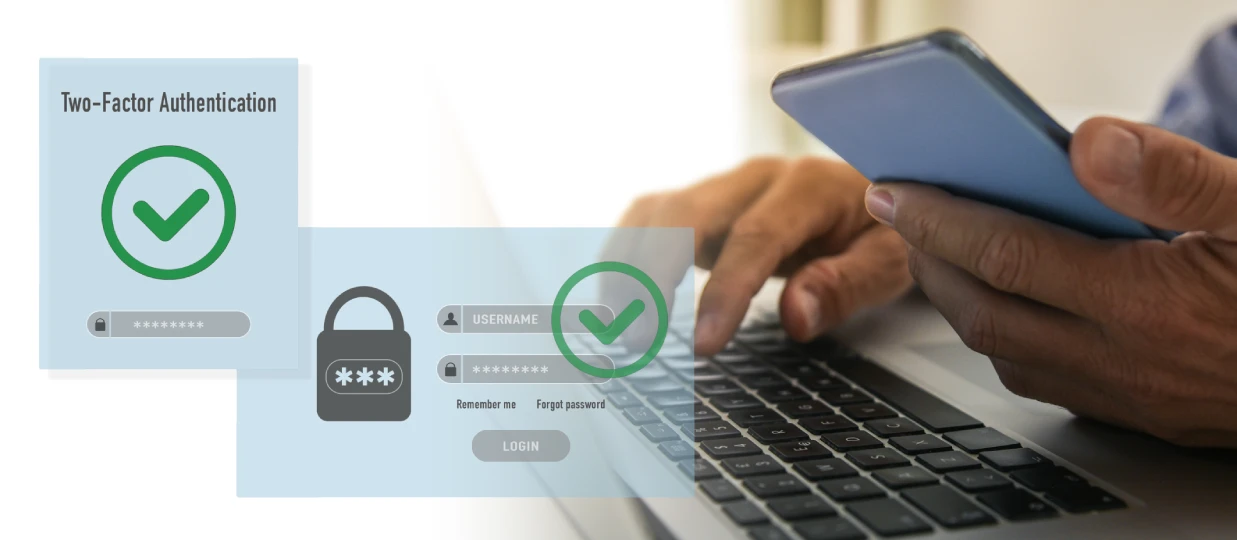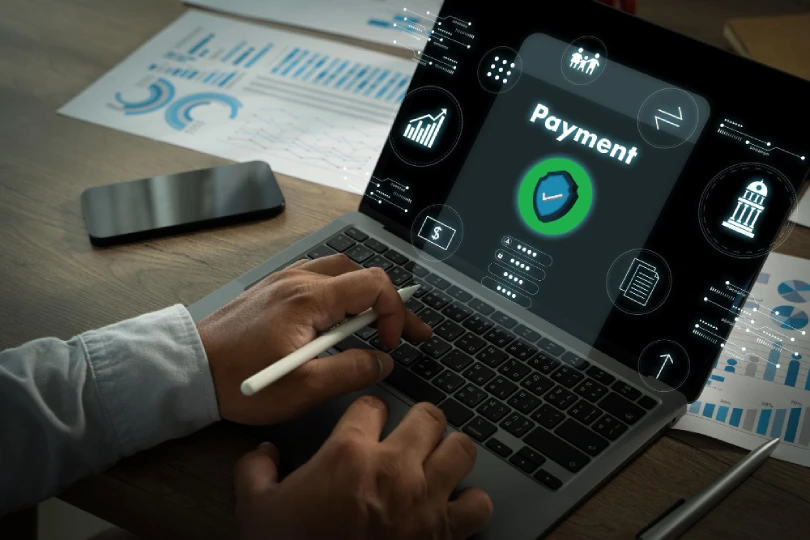Most people think of hacking or data breaches when they hear the word “cybersecurity.” But in reality, cybersecurity applications are all around us, working quietly in the background to protect our data and devices.
You likely use these tools every single day without even realizing it. From logging into your bank account to messaging your friends, security systems are working behind the scenes to keep you safe online.
These everyday applications include:
- Login protection like two-factor authentication
- Encrypted chats on apps like WhatsApp
- Secure online payments
- Built-in antivirus on your phone or laptop
- Privacy settings on your social media accounts
In this blog, we’ll highlight 5 real examples of cybersecurity tools that you already use. You’ll learn what they do, how they work, and why they matter. Whether you’re new to cybersecurity or exploring it as a career path, understanding these basics is a smart first step.
Application 1: Two-Factor Authentication (2FA)
Two-Factor Authentication, or 2FA, is one of the most widely used cybersecurity applications today. It adds a second step to the login process, making it harder for attackers to access your account even if they have your password.
You’ve probably used 2FA without even thinking about it. Some common examples include:
- Entering an OTP sent to your phone when logging into a bank app
- Using an authentication app like Google Authenticator or Authy
- Getting a login approval notification on your mobile device
- Receiving a one-time link or code on your email
2FA is used in:
- Online banking apps
- Gmail, Outlook, and other email platforms
- Social media accounts like Instagram, Facebook, and Twitter
- Payment wallets and UPI apps
What makes 2FA effective is that it requires something more than just your password. Even if someone guesses or steals your password, they still need the second factor to log in. This could be:
- A one-time password (OTP)
- A device confirmation
- A biometric scan like fingerprint or face ID
Without this second step, the login will fail.
That extra layer makes a big difference. It prevents a large number of account takeovers and is now a basic part of most secure systems. Once you understand how it works, you’ll see it as a quiet but powerful tool that protects your digital identity every day.
Application 2: End-to-End Encryption in Messaging Apps
When you chat on apps like WhatsApp, Signal, or iMessage, your messages are protected by something called end-to-end encryption. It is one of the most important cybersecurity applications used in daily life, and most people do not even realize it.
End-to-end encryption means that only you and the person you are chatting with can read the messages. Not even the app company can see what you send.
Here’s how it works, in simple terms:
- When you send a message, it gets locked (encrypted) with a special code
- The message travels through the internet in a scrambled form
- Only the receiver’s device has the key to unlock and read it
- No one in the middle can read or change the message
This protects your private chats from hackers, service providers, or anyone trying to spy on your conversation.
You may have seen messages like “Messages and calls are end-to-end encrypted” when opening WhatsApp. That is this system at work. It’s also used in apps like:
- Signal
- Telegram (in secret chat mode)
- iMessage for Apple devices
This encryption is especially important when you’re sharing personal details, passwords, or financial information over chat.
Without end-to-end encryption, your messages could be intercepted and read during transmission. With it, your chats stay between you and the person you trust. It is a strong layer of security that runs in the background without needing any extra effort from you.
Application 3: Secure Online Payments
Every time you shop online, book tickets, or pay a bill through your phone, you’re using one of the most important cybersecurity use cases in action: secure online payments.
Online payments might look simple on the surface, but there are several layers of protection working in the background. These systems are designed to protect your sensitive information like card numbers, UPI IDs, and PINs.
Here are some ways online transactions are secured:
- OTPs (One-Time Passwords): Sent to your mobile number to confirm a transaction
- UPI PINs: Required for every UPI payment
- CVV Codes: Used to confirm card-based payments
- Biometric authentication: Fingerprint or face ID on mobile apps
Another key part of secure payments is HTTPS. When you see “https://” and a lock icon in the browser, it means your connection to the website is encrypted.
Payment gateways like Razorpay, Paytm, and PhonePe also use security measures such as:
- Tokenization (replacing card numbers with random codes)
- Fraud detection tools
- End-to-end data encryption
Behind the scenes, your data is scrambled, verified, and sent only to trusted systems. It is never stored in plain text, which reduces the risk of theft.
So the next time you enter your card or UPI info, remember that there’s a full security process working to protect it. These payment protections are one of the most practical and widely used cybersecurity systems in everyday life.
Application 4: Antivirus and Built-in Security Tools
Antivirus software and built-in security tools are some of the oldest yet most reliable cybersecurity applications in use. They work quietly in the background to keep your system clean and protected without needing much attention.
Modern devices already come with security features like:
- Windows Defender on Windows PCs
- XProtect and Gatekeeper on Mac systems
- Pre-installed mobile antivirus or Google Play Protect on Android
These tools do more than just block viruses. They include:
- Real-time scanning to detect threats as they appear
- Firewalls to block suspicious network connections
- Safe browsing features to warn you about harmful websites
- Automatic updates to fix known security flaws
You might not notice them, but they’re constantly working to stop:
- Malware and spyware
- Phishing links in emails or browsers
- Dangerous downloads from unsafe sites
- Suspicious background activity
Most people do not realize how often these tools step in to block threats. They are part of your device’s daily defense and do not need extra effort to run.
If you’re interested in learning how these systems work in detail or how to build them, consider exploring Appin’s Cyber Security Certification. It covers the foundations behind the tools you already use and helps you move from being a user to someone who understands and improves security.
Application 5: Privacy Settings on Social Media
Privacy settings on apps like Facebook, Instagram, and LinkedIn are more than just optional controls. They are a key part of your personal security online. Most people do not realize that the wrong privacy settings can expose them to real risks.
Attackers often collect public information from social media to:
- Guess passwords using your birthday or pet’s name
- Craft fake messages or scams based on your job or interests
- Imitate your profile to trick your friends or coworkers
- Track your location through check-ins and posts
This is why social media privacy is one of the most overlooked cybersecurity applications in everyday life.
Here are a few things you can do right now:
- Set your profile to private or friends-only
- Hide your email, phone number, and birthdate
- Turn off location sharing and tagging by others
- Be careful with what you post in public groups or comment sections
- Review friend requests and block unknown accounts
Taking control of these settings reduces your digital footprint and makes it harder for attackers to target you.
If you’re starting out in cybersecurity or just want to be more aware of how online systems work, Appin Indore offers learning paths that show you both the technical and human sides of digital safety.
Why Cybersecurity Awareness Matters
Many people think cybersecurity is only for IT professionals or big companies. But as you’ve seen in the examples above, cybersecurity applications are already a part of your daily routine. You use them every time you log in, send a message, or make a payment.
From two-factor authentication to antivirus protection, these tools are working in the background to keep your data safe. They are not extra features. They are essential.
Here’s a quick recap of what we covered:
- 2FA protects your accounts even if passwords are leaked
- End-to-end encryption keeps your chats private
- Secure payment systems stop fraud during online transactions
- Built-in security tools block harmful files and links
- Social media privacy settings protect your identity
These are not just technical tools. They help protect your personal life, your finances, and your future.
By learning how these systems work, you can:
- Avoid common online scams
- Help friends and family stay safe
- Make smarter choices while using apps and websites
- Build a foundation for a career in cybersecurity
The more you understand about these tools, the better prepared you are for the risks that come with being online. Awareness is the first step toward better digital habits and long-term safety.
Final Thoughts
Cybersecurity is not just for experts. It’s already part of how you live, shop, chat, and scroll every day. The tools we covered in this blog work silently in the background, but understanding them helps you use the internet more safely and confidently.
Here’s what you can do next:
- Pay closer attention to the security features in your apps
- Adjust your privacy settings on social platforms
- Use strong passwords and enable two-factor authentication
- Stay curious about how digital systems protect you
If you want to take your learning further, explore Appin’s CEH Course to build hands-on skills and understand how real-world attacks work.
Not sure where to start? Inquire Now and we’ll help you choose the right course based on your goals.
Small steps toward awareness can make a big difference in your digital safety and future career.





